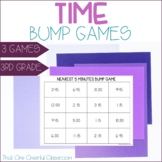Finding engaging ways to teach elapsed time can be a challenging feat for teachers, especially for those who have students that are just learning to tell time. Elapsed time is the amount of time that has passed between two points in time, and it requires students to understand both the passage of time and the concept of subtraction.
Teaching Elapsed Time on a Number Line
One way to introduce elapsed time is to use a visual representation, such as a number line. You can create a number line on the board or have students create their own on paper. Place two events on the number line, such as “Start time” and “End time,” and have students count the number of increments (minutes, hours, days, etc.) between the two events to determine the elapsed time. This helps students to see the passage of time and understand that elapsed time is the difference between two points in time.
Ways to Teach Elapsed Time with Real-Life Examples
Another way to teach elapsed time is to use real-life examples. For example, you could ask students how much time has elapsed between the start of a movie and the end, or between the time they wake up in the morning and the time they go to bed at night. This helps students to see the concept of elapsed time in a more meaningful and relevant context.
Elapsed Time Word Problems
It’s also important to find ways to teach elapsed time with word problems. These types of problems often involve multiple steps, such as determining the starting time, the ending time, and the amount of time that has passed in between. You can help students to break down these problems by having them identify the relevant information and then using that information to solve the problem.
One way to do this is to have students create a table or chart with the relevant information, such as the start time, end time, and elapsed time. This helps students to organize their thoughts and see the relationships between the different pieces of information. You can also have students draw a timeline to represent the problem, which can help them to see the passage of time and understand how to solve the problem.
Ways to Teach Elapsed Time with Hands-On Activities and Games
More ways to teach elapsed time is to use hands-on activities and games. For example, you could have students use a stopwatch or timer to measure the elapsed time between two events, or you could create a game in which students have to race against the clock to complete a task within a certain amount of time. These types of activities can be fun and engaging for students, and they can help to reinforce the concept of elapsed time.
It’s also helpful to provide students with plenty of practice with elapsed time. This can help them to become more comfortable with the concept and to develop their skills in solving elapsed time problems. You can provide practice problems in class or assign them as homework, and you can also have students work on elapsed time activities in small groups or pairs. My students love using task cards, digital escape games, and bump games to practice elapsed time.
Finding engaging ways to teach elapsed time requires a combination of visual representation, real-life examples, and hands-on activities is essential to help your students learn and master the important skill. By using a variety of teaching strategies and providing plenty of practice, you can help your students to understand this important concept and develop their skills in solving elapsed time problems.



